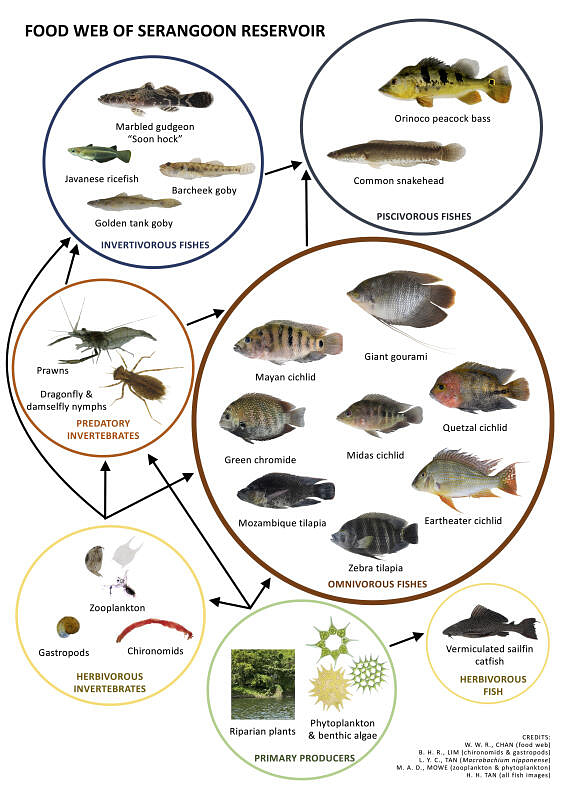SINGAPORE - To combat midge fly infestations and reduce the abundance of blue-green algae found in reservoirs here, researchers are studying the possibility of biomanipulation, that is adjusting the number of fish species within the ecosystem.
Ms Tricia Poh, a biologist at PUB's water quality department, said that midges cannot be completely eradicated as they serve as food for fish and birds and are part of the aquatic ecosystem.
Within the reservoirs, the population of midges is kept in check by natural predators: invertivorous (invertebrate-eating) fish such as green chromide, quetzal cichlid, Javanese ricefish, and Siamese glassfish.
"However, under favourable environmental conditions such as hot weather, midges can reproduce very quickly and overwhelm their predators, leading to an explosion of midges which swarm in large numbers," said Ms Poh.
Occasional swarms of midges have been recorded near Pandan and Bedok Reservoirs in the past, causing nuisance to the residents living there, though they do not bite or cause disease.
To tackle this, PUB conducts daily monitoring of the eggs, larvae and adult numbers of the midges, implementing mitigating measures when necessary, such as increasing the frequency of fogging along reservoir embankments during the peak emergence period of the midges, said Ms Poh.
Similarly, PUB routinely monitors the growth rate of blue-green algae, or cyanobacteria, in reservoirs as they can grow rapidly in favourable conditions such as warm and calm water, and where there is sufficient sunlight and nutrients.
The algae blooms can then form a concentrated green layer on the water surface, known as a scum. When photosynthesis stops at night, respiration of large quantum of algae may deplete dissolved oxygen in the water, killing fish and other aquatic organisms in the process.
To mitigate this, surface aerators are used to disperse the algae scums, and algaecide is applied to reduce the abundance of cyanobacteria, said Ms Poh.
"But the current measures taken to mitigate the algae and midge issues address the symptoms of the problem and not the root cause," she added.
Therefore, in biomanipulation trials, the numbers of planktivorous, invertivorous or piscivorous (fish-eating) fish are adjusted, which may help create a sustainable and balanced ecosystem while also reducing the occurrences of algae and midge issues, said Ms Poh.
Biomanipulation trials in Serangoon Reservoir and Lower Seletar Reservoir are expected to start next year.



